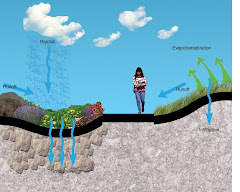Water quality protection. Proper landscaping reduces nitrate leaching from the soil into the water supply and reduces surface water runoff, keeping phosphorus, and other pollutants out of our waterways.
Reduced soil erosion. A dense cover of plants and mulch holds soil in place, keeping sediment out of lakes, streams, storm drains and roads.
Improved air quality. Trees, shrubs, and turf remove smoke, dust and other pollutants from the air. One tree can remove 26 pounds of carbon dioxide from the atmosphere annually, equaling 11,000 miles of car emissions.
Lower summer air temperatures. Trees shading homes can reduce attic temperatures as much as 40 degrees. According to the EPA, urban forests reduce urban air temperatures significantly by shading heat sinks such as buildings and concrete, and returning humidity to the air through evaporative cooling.
Natural resource conservation. By using trees to modify temperatures, the amount of fossil fuels used for cooling and heating is reduced. Properly placed shade trees reduce house temperatures in the summer, allowing air conditioning units to run 2 to 4 percent more efficiently, but allowing the sun to warm the house in the winter.
Friday, October 19, 2007
Environmental Benefits of Landscaping with a Raingarden
Subscribe to:
Post Comments (Atom)


No comments:
Post a Comment